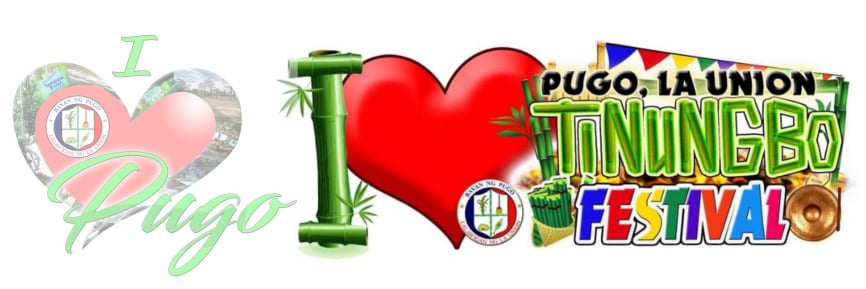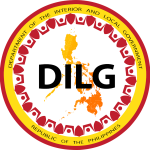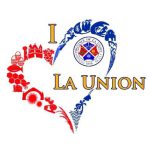
With such attractions as Pugo Adventure (Pugad) and Kultura Splashwave, the Municipality of Pugo labels itself as the “Eco-adventure Destination of La Union”. Conveniently located along Marcos Highway, transportation is easily available in the locality with numerous buses coming from Baguio en route to Manila, Pangasinan and La Union, and vice-versa.
Pugo Adventure, opened In September 2010, has brought herds of thrill seekers to try out its three ziplines, the longest and highest in Northern Philippines. The highest zipline measures 250 ft. and gives a breathtaking panoramic view of Pugo’s picturesque surroundings. Other facilities include two pools, picnic grounds, an ATV track and a tower for rappelling and wall climbing.
Kultura Splashwave, recently completed In November 2010, has similarly drawn tourists by the thousands because of its wavepool. This tastefully designed wonderland features several pools, waterslides, cabanas, snack houses, function halls and a hotel.
Quieter and yet just as appealing with its pristine waters is the exquisite Tapuakan River. Another place to go to for a retreat to nature is Dacanay Reforestation Park with its gigantic trees and stunning views. The budding municipality of Pugo has recently become one of La Union’s more prominent towns. It celebrates its Centennial Foundation Anniversary every January 17-23 and Parochial Fiesta every last Sunday of December.
QUICK FACTS
Land Area: 8,711.75 hectares
Population: 19,898
Number of Barangays: 14
Classification: Fifth Class Municipality
Average Annual Income: Php 50,435,197.45
PUGO’S FOURTEEN (14) BARANGAYS
1. Ambangonan
Barangay Ambangonan got its name when Spanish Priest erected a big cross near the Ambangonan River, causing the place to called Binangonan Cruz (loosely “where the cross was raised”). Later the name was cut short to Ambangonan. When the boundary line between La Union and the old Mountain Province was established in accordance with Executive Order Number 11, series of 1909, the eastern portion of Christians (called “Iloco”) remained part of Rosario, La Union
South of Ambangonan was Barrio Dagupan, one of the original barrio comprising the township of Pugo. Its name was because people from various places with different customs and traditions congregated (i.e. in Ilocano, “nagdadagupan,” meaning gathering place). The lack of strong leader who could unite the villagers led to the abandonment of the place. Now inhabited by only a very few families, it is referred to as Sitio Ambangonan Sur
2. Ambalite
Barangay Ambalite was formerly a sitio of Tavora, Tubao, La Union. It became a barrio of Pugo in 1922 when Barrio Tavora and its five sitios were annexed to Pugo, La Union. The settlers named the place Sitio Espana but this was changed to Sitio Ambalite because there had been a Balite in the barrio, a tree so huge that long after it died of old age, the residents refused to cut it down believing that it was haunted by evil spirits. The barangay has two sitio, Tikur and Ambalite Este.
3. Cares
Barangay Cares was formerly a sitio of Barrio Poblacion. It became a barangay upon the petition of the residents and the recommendation of the Municipal Council, duly approved by the Provincial Board of La Union on August 21, 1968. There was supposedly a bug Caliskis tree where people used to tie their carabaos in middle of the place thus it was called Sitio Caliskis.” The name was later on shortened to “Cares” by those from the Pugo Central School. Sitio Patnay, about seven kilometres towards the mountain east of the town hall is under its jurisdiction
4. Cuenca
Barangay Cuenca was first named Ababaan due to abundance of wild gabi (i.e. “aba”). It was then later called Casilagan after palm trees (i.e. “silag”) that also abundantly grow there. The names, however, were not used for long since there were also other places called “Casilangan” and “Inabaan” in the town of Rosario, La Union.
The name Cuenca is coined from the name of a bird (i.e. “Coling”) and the Katipunero’s wife named “Monica.” One of the beliefs of the Bago is when the eagle-like bird “Coling” flies high crying “Kling! Kling!,” a traveler should stop and rest until the bird stops crying otherwise an accident will befall the traveler or any member of his household before reaching the destination.
It is told when General Emilio Aguinaldo’s Troops were fleeing northward from the Americans, a certain Doña Monica, wife of Katipunan Officer, could no longer hike up to Baguio so upon reaching Sitio Casilagan the gobernadorcillo ordered four men to carry the her in a hammock. When they were about to start, a “coling” flew above them and the men stopped knowing the bad omen but the Katipunan officer urged them to proceed as the American troops were already approaching. The four men who carry were relieved in Sitio Palina by another four men. It was learned later that the Doña Monica became very ill upon arrival. The old men of the barrio who assembled in the dap-ay decided to change the name of their barrio from Casilagan to “colingca” in memory of the bird and the Doña Monica. The named was later on cut short to “Cuenca.” Barangay Cuenca has one Sitio formerly named “Ken Emoy” but is now called “Cuenca Norte”.
5. Duplas
Barangay Duplas was formerly Barrio Tavora. The Municipal Council of Pugo in its Resolution Number 68, series of 1970 petitioned for the change on September 19, 1970 in accordance with Article II, Section 3 of Republic Act Number 3590 otherwise known as the Barangay Charter. It became a barangay by virtue of resolution Number 669 duly approved by the La Union Provincial Board on October 16, 1970 under Governor Juvenal K. Guererro. The first settler named the place Sitio Upupulas after the numerous Duplas trees growing in the place. Later the name became Duplas.
6. Maoasoas Norte
Maoasoas Norte was created as a new barangay by virtue of resolution Number 417 dated august 7, 1970 approved by the Provincial Board of La Union under Vice Governor Roman R. Villalon Jr., who was the Acting Governor at the time. This was per recommendation of Municipal Council of Pugo in Resolution Number 41, series of 1970 and based on a petition of the residents dated June 30 of the same year, all in accordance with Section 3 of Article II of Republic Act Number 3590.
The place got its name from its first settlers who after clearing the land, agreed with the locals to change the course of a brook so they could construct wider and better rice paddies out of the brook’s bed. Such was done but when the heavy rains came, the brook returned to its former course. The agreement was annulled (“nawaswas” in Ilocano) and the place was named “Maoasoas” after that.
7. Maoasoas Sur
This Barangay was formerly Called Sitio Catavarisan, of Barrio Masoasoas. When it was divided in two barangays. Sitio Catavarisan was made the mother barrio and became Maoasoas Sur. What remained of the original barrio became Maoasoas Norte. This arrangement was made because the Barangay Captain was residing in Sitio Catavarisan and besides, the population of the Sitio was very much less than the population of the Barrio Proper. The place had earlier been known as “Sitio Casagatan” but when the overseer of Hacienda Mercedes in Barrio Inabaan, Rosario, employed women workers from there, more than ten of them were surnamed “Tavares” and listed their place of residence as “Catavarisan” (the place of Tavares) instead of Casagatan (the place of Sagat Trees). Since then, the sitio was referred to by that name until it acquired another name – Maoasoas
8. Palina
Barangay Palina, this site of the famed Marcos Park is the most mountainous barangay of the Municipality of Pugo. It is seven kilometers east of the town hall and is accessible via Marcos Highway. The place is named after its first settler, a man named Palina. Lowlanders going up the mountain to hunt or make kaingin called the place “ken Palina” (literally Palina’s Place in English). When the late Guillermo Ramirez Went to the place to settle down with his family, he wrote in his real estate tax declarations “Sitio Palina” as the location of his real property. The name stuck and residents began referring to their place as Sitio Palina.
9. Poblacion East
Barangay Poblacion East was created by Resolution Number 19 dated September 20, 1976, in accordance with Presidential Decree Number 86-A. It was formerly known as Sitio Ursasan. The place had been a meeting place before going to their work and had also been a resting place for people coming home from work hence it was named “ursadan,” which means “resting place” in the Bago dialects. When Barrio Poblacion was divided, Sitio Ursadan became Barangay Poblacion East. It is now where the public market and the town hall are presently located.
10. Poblacion West
Barangay Poblacion West, like Poblacion East, was created by Resolution Number 19 dated September 20, 1976, in accordance with Presidential Decree Number 86-A, which divided the former Poblacion into two barangays. It was the original Barrio Pugo in 1911 when it became the seat of the township government. Now it is Barangay Poblacion West. The western part of the Public Market is located in this barangay.
11. San Luis
This barangay was first settled in 1880 by families who transferred from Barrio Cuenca, prominent among the founders of San Luis were Day-ao, Paycao, Ambog, Toma-ang, Uswag, and Bangaoet among others. The name was coined from two sources, “san” is the first syllable of “santol,” which were abundant in the area and “Luis” was derived from the Name of Doña Luisa, the wife of a government official from Rosario from whom the settler sought advice with their problems. The first male child born in the settlement was named Luis (Uswag), and the first female child born was named Luisa (Day-ao).
Barrio Enmestampa was one of the original eight barrios established as a township in 1911. Barrio San Luis absorbed it when the military government of Baguio was transformed to civil administration. The situation of the Barrio San Luis and Barrio Enmestampa prior to 1911 was unique because the Christian residents called “Iloco” were considered residents of Barrio Enmestampa and were under the Municipal President of Rosario, La Union while the non-Christians or the Bagos were considered residents of Barrio San Luis and were under the military government of Baguio yet they were all in the same place. After the establishment of Pugo as township, the boundary of La Union and Mountain Province were re-drawn Barrio Enmestampa was abolished and its territory merged with Barrio San Luis
12. Saytan
Saytan is the southernmost barangay of Pugo. Documentary evidence shows that the place had been settled as early as 1859, folktales tells about a hundred meters north of the present site was a trading place where various merchants from the Mountain Province, La Union, and Pangasinan meet. The most important good sold or bartered was the “Saitan” stones used for sharpening bolos, axes, and spearheads. The name of the place was derived from this stone. The main crop of this barangay is Baguio beans
13. Tavora Proper
Barangay Tavora was once a large barrio comprised of Sitios Damosil, Laud ti Simbaan, Duplas, Ambalite and Tikur, the first seat of the town government. The name “Tavora” comes from the late Don Dionisio Tavora, former president of Municipality of Tubao, La Union. When the whole Barrio Tavora was annexed to Pugo in 1922, Sitio Ambalite was made a barrio and Tikur became its sitio. When Sitios Duplas and Laud ti Simbaan were made barangays in 1970, the only sitio left was Damosil – which remained as Barangay Tavora
14. Tavora East
Formerly known as Sitio Laud ti Simbaan, Tavora Este was created by virtue of Provincial Board Resolution Number 531 dated August 28, 1980, endorsed by the Municipal Council of Pugo under Resolution Number 54, series of 1970, per petition of the residents’ dates August 15, 1970. The Roman Catholic Church and the Pugo Catholic Schools are located here.
Socio-Cultural-Political Development
Upon the establishment of the township of Pugo in 1911, the first election for township President was held in the Poblacion on December 5 of that year. The voting was done where candidates were made to stand at the front and voters chose their candidates by standing behind them. The candidates with the most voters behind him won the election. The same method was followed in the barrios in the selection of barrio representatives to the Municipal Township Council. However, the old men in the community were the ones who usually chose the councilor.
In 1946, the United States of America recognized the independence of the Philippines, consequently in 1948, election of Pugo Mayor followed where Mr. Faustino Madriaga was elected. The following page is a list of Mayors that governed the municipality hence forth.
1912 – PRESENT
| DON AGRIPINO SAGAMPUD | TOWNSHIP PRESIDENT, PUGO BENGUET | 1912-1913 |
| DON TABOY AYOA | TOWNSHIP PRESIDENT, PUGO BENGUET | 1914-1915 |
| DON BERNABE GUIDENG | TOWNSHIP PRESIDENT, PUGO BENGUET | 1916-1918 |
| DON BERNABE GUIDENG | MUNICIPAL DISTRICT PRESIDENT, PUGO, LA UNION | 1919-1920 |
| DON BERNABE GUIDENG | MUNICIPAL DISTRICT PRESIDENT, PUGO, LA UNION | 1921-1922 |
| DON CASIANO BOAD0 | MUNICIPAL DISTRICT PRESIDENT, PUGO, LA UNION | 1923-1925 |
| DON DONATO ZARATE | MUNICIPAL DISTRICT PRESIDENT, PUGO, LA UNION | 1926-1928 |
| DON GABINO ZAMBOA | MUNICIPAL DISTRICT PRESIDENT, PUGO, LA UNION | 1929-1931 |
| DON SANTIAGO LAB-ONG | MUNICIPAL DISTRICT PRESIDENT, PUGO, LA UNION | 1932-1934 |
| GABINO ZAMBOA | MUNICIPAL DISTRICT MAYOR | 1935-1937 |
| RUFINO BOADO | MUNICIPAL DISTRICT MAYOR | 1938-1940 |
| FAUSTINO MADRIAGA | MUNICIPAL DISTRICT AND MILITARY MAYOR | 1941-1943 |
| MARCOS VENTURA | JAPANESE OCCUPATION MAYOR | 1943-1945 |
| FAUSTINO MADRIAGA | LIBERATION AND PCAU MAYOR | 1945-1946 |
| ARCADIO BOADO | APPOINTED MUNICIPAL MAYOR | 1946-1947 |
| FAUSTINO MADRIAGA | ELECTED MUNICIPAL MAYOR | 1948-1959 |
| ALFREDO DULATRE | ELECTED MUNICIPAL MAYOR | 1960-1963 |
| FLORENTINO PUGONGAN | ELECTED MUNICIPAL MAYOR | 1964-1967 |
| ALFREDO DULATRE | ELECTED MUNICIPAL MAYOR | 1968-1980 |
| ATTY. NAPOLEON BOADO | ELECTED MUNICIPAL MAYOR | 1980-1986 |
| ATTY. FAUSTINO MADRIAGA JR. | OIC, MUNICIPAL MAYOR | 1986-1988 |
| JUAN EMMAN | OIC, MUNICIPAL MAYOR | 1986-1988 |
| NAPOLEON CALUB | OIC, MUNICIPAL MAYOR | 1986-1988 |
| ATTY. NAPOLEON BOADO | ELECTED MUNICIPAL MAYOR | 1988-1991 |
| FLORENTINO PUGONGAN | APPOINTED MUNICIPAL MAYOR | 1991-1992 |
| ATTY. ROMULO MADRIAGA | ELECTED MUNICIPAL MAYOR | 1992-1995 |
| ENGR. ORLANDO B. BALLOGUING | ELECTED MUNICIPAL MAYOR | 1995-2004 |
| NOEMI T. BALLOGUING | ELECTED MUNICIPAL MAYOR | 2004-2013 |
| ENGR. ORLANDO B. BALLOGUING | ELECTED MUNICIPAL MAYOR | 2013-2016 |
| DR. PRISCILLA M. MARTIN | ELECTED MUNICIPAL MAYOR | JULY 1, 2016 TO PRESENT |




